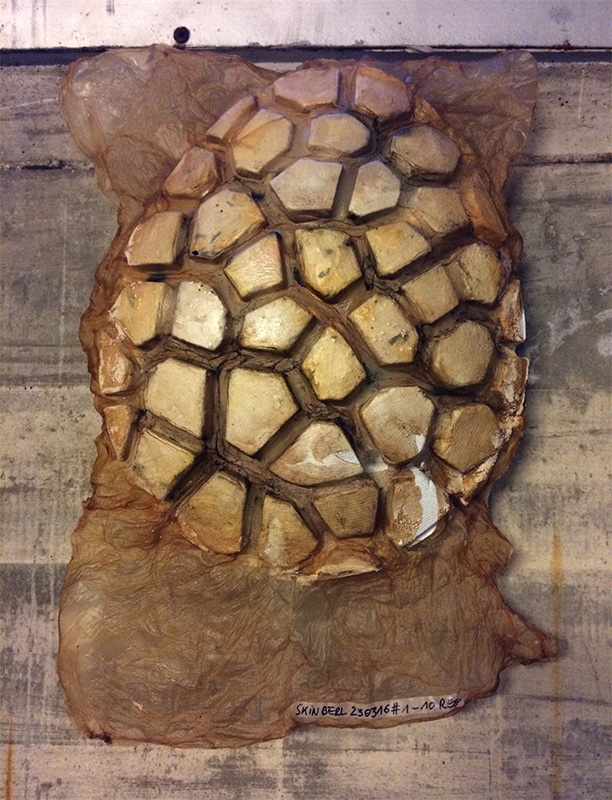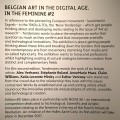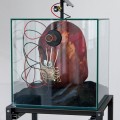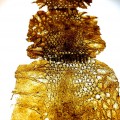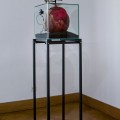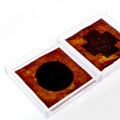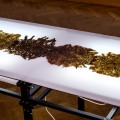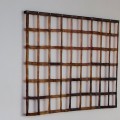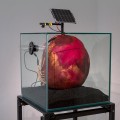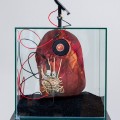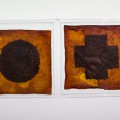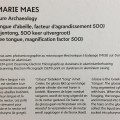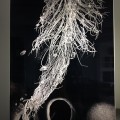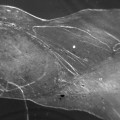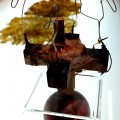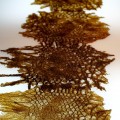The Tendencies exhibition unites contrasting narratives of some of the most interesting and intriguing voices in Belgian arts. Tendencies presents artworks that ‘use’ or ‘comment upon’ the latest evolutions in science and technology. Tendencies puts emphasis on works which question scientific and technological innovations as much as they incorporate them. It wants to open up the field of reflection relating to these links and highlight structural analogies between the creators of distinct and complementary fields. The title references the Nove Tendencije movements in the 1960s and 1970s in Zagreb, one of the first European initiatives that reflected upon ‘art as research’.
To establish a unique platform for the exchange of ideas from the area of contemporary art and science in a digital age, the annual selection of six artists is made carefully. By presenting Tendencies in the Center for Fine Arts (Bozar), Tendencies has the ambition to narrow the historical rift between contemporary arts at large and different movements in media arts or hybrid arts.
For this second edition, it unveils and promotes the work of six emerging or established female artists who probe innovative protocols and paradigms in the domains of artistic, scientific and technological creation. TENDENCIES brings together contrasting signatures of some of the most intriguing voices within the Belgian artistic sector.
This edition is organised in partnership with NOVA XX(Stéphanie Pécourt – curator) – an international competition dedicated to technological, scientific and artistic innovation amongst women in the age of the Fourth industrial revolution – instigated by the Halles Saint-Géry/Brussels.
AnneMarie Maes is part of the TENDENCIES 2017 edition, curated by Stéphanie Pécourt. AnneMarie Maes explains her participation in the exhibition as such:
‘In my Laboratory for Form and Matter I work with a range of biotic and abiotic elements. I view my lab as an open environment for experimentation, a space for contradiction, criticism and evaluation. I combine organic components such as vegetal matter, propolis and chitine, with living systems such as fungi and bacteria to create artifacts for the future. My micro-organisms grow biofabrics and I research how these membranes can be enhanced and made useful through embedded electronics and how more sensorial qualities can be implemented in these membranes via living technology. Navigating between blueprints and ‘Proof of Concept’, my objects can be classified as ‘Future Archaeology’: fragments of a Forgotten World as well as fragments of a World To Come.
The installation ‘PH3 – Future Archaeology’ shows a collection of rarities. They are presented on a large laboratory table with a translucent top, accompanied by a geometrical cut-up artwork in cellulose skin and a large-scale lightbox representing a Scanning Electron micrograph of a honeybee tongue.
The visual language of my installation ‘PH3 – Future Archaeology’ is multilayered.
Every artifact is the outcome of a particular experiment. They are part of a larger development for building and fine-tuning an Intelligent Guerilla Beehive, a mobile shelter for homeless honeybees. This radically new device tackles a domain where human and non-human actors collaborate to maintain the resilience of an ecosystem in decline.’
A cabinet of experiments, a landscape without time …
Ph3 – Future Archaeologies, Tendencies #2 – Bozar Brussels
Short description of the pieces:
– Intelligent Guerilla Beehive (Heart) – 150 x 42 x 42 / sculpture with cellulose skin and electronics in glass box on metal pedestal.
The Intelligent Guerilla Beehive is a shelter for swarming bee colonies, prototyped out of organic materials and powered by green energy. It is a bio-technological sensing device to measure the health of the environment as well as to monitor the wellbeing of bee colony living inside. Bacteria -living in a biofilm on the outer skin of the beehive- send out warnings by adapting their colour to different degrees of environmental contamination. Bacteria living on the inner side of the beehive’s skin support the bees in their struggle against the Varroa mite.
– Glossa (bee tongue, magnification factor 500) – 110 x 78 x 14 / lightbox with Scanning Electron Micrograph (SEM) print on duratrans in aluminium casing.
Glossa is the Greek word for ‘tongue’. The glossa is similar to a long segmented cylinder covered with hairs. When the bees are foraging, the tongue is extended and immersed into the nectar. The hairs on the glossa erect to collect the liquid and the nectar is sucked into pharynx (throat).
– GRID (Madras), pattern composed with a Sensorial Skin – 300 x 50 x 3
Vegetal leather grown in a symbiotic culture by Acetobacter xylinum bacteria and yeast cells.
The skin is dyed with organic materials cultivated in my Open Air Laboratorium (the Hortus Experimentalis): Hibiscus Flowers, Avocado Pits and Peels, Eucalyptus Bark and Stinging Nettles (whole plant).
– Laboratory for Form and Matter, table, object – 300 x 75 x 75 / table from steel and plexiglass lit by TL light.
Most of the experiments are carried out in my ‘Laboratory for Form and Matter’ where I work with a range of biotic and abiotic elements. I combine organic components such as vegetal matter, propolis and chitine, with living systems such as fungi and bacteria. My micro-organisms grow biofabrics and I research how these membranes can be enhanced and made useful through embedded electronics and how more sensorial qualities can be implemented in these membranes via living technology.
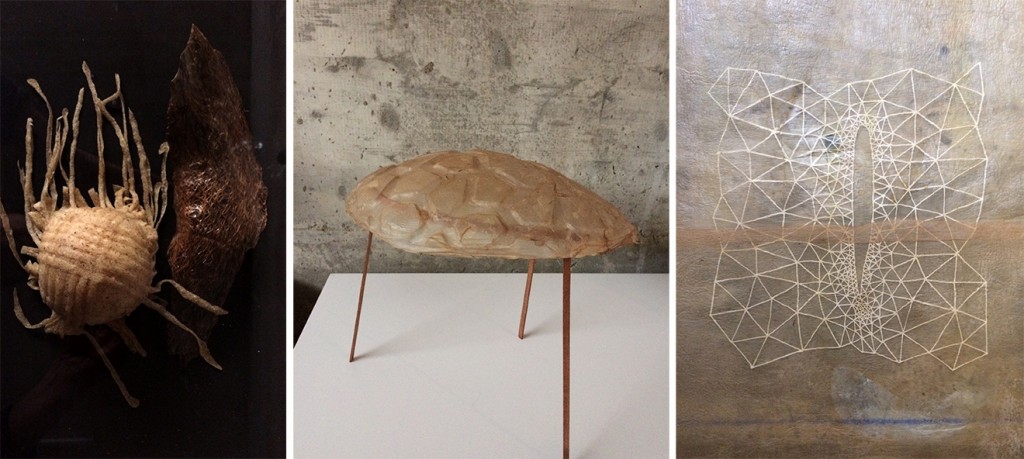
artifacts from the Laboratory for Form and Matter
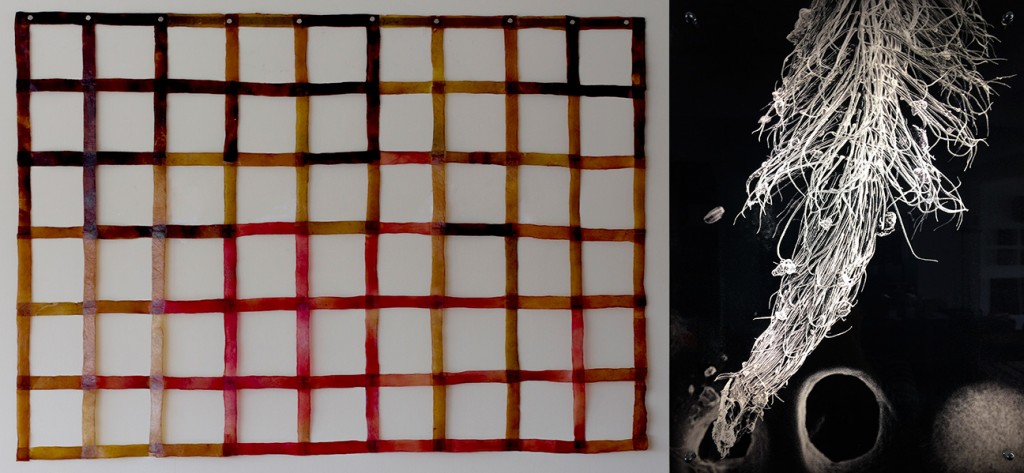
left: skin ‘Madras Grid’, 155 x 120 x 3mm (vegatal colored microbial skin – avocado, hibiscus, eucalyptus, stinging nettles)
right: Scanning Electron Micrograph (SEM) of a honeybee tongue, 120 x 80cm (aluminium box and duratrans print

bottom: light table, custom designed for presentation of Future Archaeology collection, 300 x 75 x 75
(metal open structure, opal plexiglass, 4 x TL lamps)
bio:
AnneMarie Maes is an artist and a researcher. Her art meanders on the edge of biology, ecology and technology. Her research practice combines art and science with a strong interest for DIY technologies. She works with a range of biological, digital and traditional media, including live organisms.
Her artistic research is materialized in techno-organic objects that are inspired by factual/fictional stories; in artifacts that are a combination of digital fabrication and craftsmanship; in installations that reflect both the problem and the (possible) solution, in multispecies collaborations, in polymorphic forms and models created by eco-data. In her Laboratory for Form and Matter she studies the processes by which Nature creates form: the creation of honeycombs, how bees self-organize into swarms, how plants grow and form geometric patterns, how bacteria and yeast cells collectively create material surfaces forming biofabrics. She observes and analyzes these processes, isolates them or causes them to appear in artificial conditions. She creates art works from this artistic research in many different media: installations and sculptures, video, audio, photographs and objects.
Anne Marie Maes is a founding artist and director of several non-profit art collectives as Looking Glass, So-on and Okno. She has for decades been a recognized leader pioneering art/science projects in Belgium, using highly original ways to bring out hidden structures in nature by constructing original technological methods to probe the living world and by translating that in artistic creations.
She has a strong international profile, having exhibited (amongst others) at Bozar in Brussels, Koç University Gallery in Istanbul, Borges Center in Buenos Aires, Arsenals Museum in Riga, Skolska Gallery in Prague, the Institute of Evolutionary Biology in Barcelona, the Designmuseum in Mons, the Wissenschaftskolleg in Berlin, Museum de Domeinen in Sittard, Grey Area Gallery in Korcula, the Science and Technology museum in Milano.
In 2017 she was awarded a Honorary Mention in the Hybrid Art category at Ars Electronica, for the Intelligent Guerilla Beehive project.
